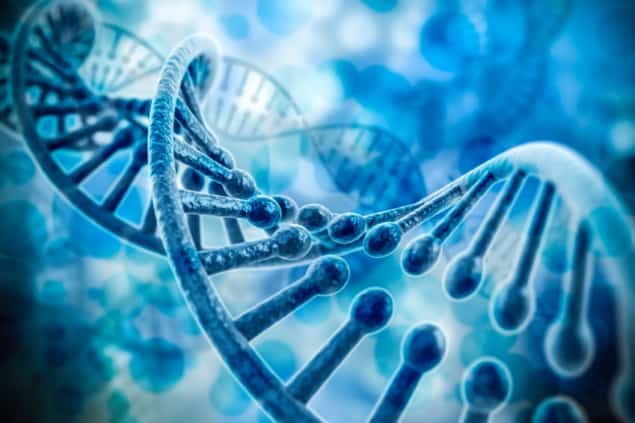
Biological physics is a thriving area of physics that should be held in the same regard as traditional fields such as condensed-matter and nuclear physics. That is according to a major new report by the US National Academies of Science Engineering and Medicine, which concludes that the field can only reach its full potential with increased funding and improved education in the area.
As a broad and rapidly growing field, biological physics tackles issues such as the folding of proteins, the dynamics of the SARS-COV-2 virus and the organized movement in flocks of birds. The report, which is the first “decadal” survey into the field, highlights four key questions that should act as “foci” for researchers. What are the physics problems that organisms need to solve? How do living systems represent and process information? How do macroscopic functions of life emerge from interaction among many microscopic constituents? And how do living systems navigate parameter space?
The report warns, however, that the field’s rapid growth has brought many challenges. One is that the level of funding for biological physics in the US is barely enough to keep the field going and much of that money is fragmented among multiple funding agencies. To address this, the report calls on the American government to provide the National Science Foundation with resources to increase grant sizes while maintaining the “breadth and coherence” of the field.
The report also says that the National Institute if Health should form sections devoted to biological physics and the Department of Energy should construct user facilities to meet the demands of scientists working in the field. Yet the report is also realistic that establishing a new scientific field within funding agencies will be a “multi-generational” challenge.
Nurturing diversity
As well as boosting the amount of money in biological physics, the report says progress in the field will only be made if it can recruit and nurture a flow of “new and diverse talent”. The 13-member committee that wrote the report found that biological physics is poorly represented in the core US undergraduate physics curriculum and that few students at this level have opportunities to take specialized courses. However, at graduate level, they say they have seen a “rapid growth” in the number of PhD students taking biological physics that has put it on par with other fields of physics.
The emergence of biological physics as a field of physics has been a decades-long process
William Bialek
The report also recommends federal agencies support core undergraduate physics education for under-represented and historically excluded groups. It also calls on faculty from minority-serving institutions to “play a central role” in shaping new federal programmes in this area. In addition, it recommends that “special attention” is given to the experience of female students who are often a minority in physics and a large percentage of which – estimated to be 75% – have reported experiencing harassment.
“The emergence of biological physics as a field of physics has been a decades-long process, and the work of biological physicists already has had an enormous impact on the world,” says William Bialek from Princeton University, who chaired the committee that wrote the report. “Biological physics will continue developing and influencing our understanding of the phenomena of life, and realizing the full potential of the field requires that we rethink how to teach physics, biology, and science in general, revise fragmented funding structures, and welcome and nurture diverse aspiring scientists.”
Otger Campàs, director of the physics of life excellence cluster at the Technical University in Dresden, Germany, who has spent over 15 years working in the US, says that the report will hopefully encourage physics departments “to strengthen their efforts” towards integrating biological physics as an integral part of the subject. “It is also important that the report defines clear roles for physics in the study of living systems as this will guide physics departments and funding agencies in their efforts to help the field,” Campàs told Physics World. Drawing up a ‘Google Earth’ of the human body
Campàs adds that one of the major challenges of interdisciplinary fields such as biological physics is countering the “rigidity of existing academic structures”. This means that creating specific funding programmes, as is recommended in the report, will be important when helping to further establish the field. “Nature does not care about disciplines, and most scientific problems require expertise from different areas of knowledge, so we should adapt our academic structures to properly address modern scientific problems,” he says.
Developmental cell biophysicist Jean-Léon Maître from the Curie Institute in Paris, France, says that some of the issues in the report will also likely apply beyond the US where biological physics has also been accelerating. When Maître was an undergraduate student in France in the early 2000s, for example, he says that biological physics was not even on the curriculum but in the past five years he has taught three different physical biology Master’s degree programmes.
Maître adds that boosting biological physics as a discipline could also help to attract more women into physics given that they typically make up around 60% of undergraduate students in biology compared to 25% in physics. “Biology certainly seems like a new exciting playground to a growing number of physicists and so far biologists have also benefited from this interest,” he told Physics World.



